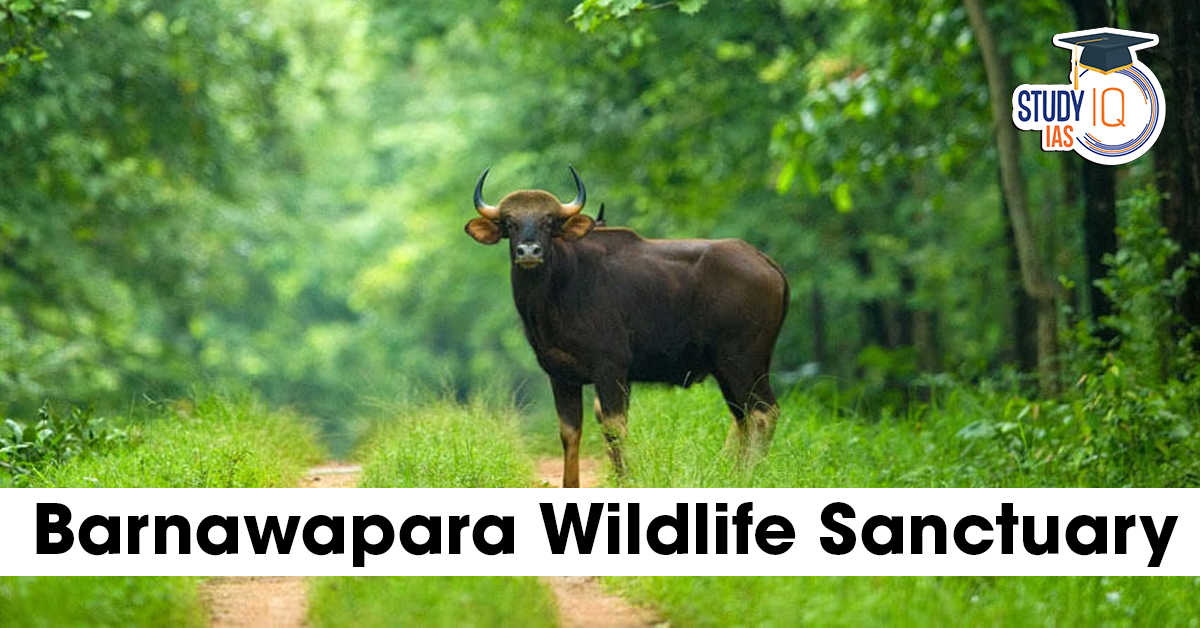Table of Contents
Nestled in the heart of Chhattisgarh, the Barnawapara Wildlife Sanctuary stands as a remarkable example of India’s conservation success stories. Once known for the local extinction of blackbucks, the sanctuary has now scripted a remarkable comeback tale through a five-year blackbuck revival plan (2021–2026).
With its thriving grassland–forest ecosystem, rich biodiversity, and sustainable ecotourism model, Barnawapara has evolved into a biodiversity hotspot and a symbol of coexistence between conservation and community development.
About Barnawapara Wildlife Sanctuary
Location
-
District: Balodabazar, Chhattisgarh
-
Coordinates: Between 80°22′30″E to 82°37′30″E longitude and 21°18′45″N to 21°30′00″N latitude
-
Area: Approximately 66 sq. km
-
Distance: Around 106 km from Raipur via National Highway 53
Barnawapara lies within the Mahanadi River basin, featuring a mosaic of forests, grasslands, and rivers that nurture both herbivores and carnivores in a balanced ecosystem.
Topography and Climate
The sanctuary features gently undulating plains with elevations up to 640 meters above sea level. Three rivers—Balmedhi, Jonk, and Mahanadi—flow through the region, serving as lifelines for wildlife and vegetation.
-
Annual Rainfall: ~1,200 mm
-
Best Season to Visit: November to February (pleasant winters)
-
Ecosystem Type: Tropical deciduous forest interspersed with open grasslands
This diverse terrain and climate make Barnawapara ideal for grassland restoration, which played a crucial role in the reintroduction of blackbucks.
Flora: Lush Green Deciduous Forests
Barnawapara’s vegetation primarily consists of moist and dry deciduous forests dominated by:
-
Teak (Tectona grandis)
-
Sal (Shorea robusta)
-
Mahua (Madhuca indica)
-
Tendu (Diospyros melanoxylon)
-
Bamboo and mixed species
The grasslands and forest edges provide excellent grazing grounds for herbivores, while dense patches support predators and nesting birds.
Fauna: A Haven for Wildlife
The sanctuary is home to a wide range of species, reflecting Central India’s ecological richness.
Key Species Found:
-
Mammals: Leopard, Indian bison (Gaur), Chital, Wild boar, Barking deer, Nilgai
-
Reintroduced Species: Blackbuck (Antilope cervicapra) – once declared locally extinct in 2017, now successfully reintroduced under the 2021–2026 revival plan
-
Birds: Peafowl, Parakeets, Kingfishers, Herons, and Raptors
-
Aquatic Fauna: Fish and amphibians thrive around the Balar reservoir
The successful blackbuck revival has reestablished the prey-predator equilibrium and enhanced the sanctuary’s ecological stability.
Blackbuck Revival in Barnawapara: A Conservation Milestone
Declared locally extinct in Chhattisgarh in 2017, the blackbuck has made a remarkable recovery thanks to a five-year revival initiative (2021–2026) launched by the Chhattisgarh Forest Department.
Revival Highlights:
-
Captive breeding and reintroduction programs launched under scientific supervision.
-
Restoration of native grasslands to provide suitable habitat.
-
Strengthened anti-poaching patrols and community participation in conservation.
-
Improved monitoring and ecological management using drone and GIS mapping tools.
This initiative not only restored a locally extinct species but also set a model for grassland ecosystem conservation across India.
Ecotourism and Visitor Experience
Barnawapara is also known for its sustainable tourism infrastructure, balancing recreation with conservation.
Tourism Highlights:
-
Watchtowers and nature trails for wildlife sightings
-
Eco-camps and forest rest houses for visitors
-
Interpretation centers to promote awareness about wildlife and local ecology
-
Community-led ecotourism programs generating livelihood for nearby villages
Visitors can witness the serenity of the forest, the grace of blackbucks, and the rich biodiversity that defines central India’s wilderness.
Significance of Barnawapara Wildlife Sanctuary
-
Biodiversity Conservation:
Acts as a refuge for central Indian wildlife, maintaining the prey–predator balance and supporting diverse flora and fauna. -
Successful Species Reintroduction:
The blackbuck comeback stands as a national example of species revival through scientific management. -
Ecotourism and Sustainability:
Promotes eco-friendly tourism, involving local communities in forest protection and livelihood generation. -
Educational and Research Value:
Serves as a field site for ecological research, biodiversity assessment, and wildlife management studies.
Conclusion
The Barnawapara Wildlife Sanctuary is not just a protected forest—it is a symbol of ecological resilience and conservation success. The revival of the blackbuck population demonstrates India’s growing commitment to biodiversity protection and sustainable coexistence.
As the sanctuary continues to balance wildlife conservation, habitat restoration, and ecotourism, it stands as a model for other states aiming to restore locally extinct species and promote inclusive conservation.


 UN @ 80: A Quarter of a Century Tribute ...
UN @ 80: A Quarter of a Century Tribute ...
 India’s Aviation Vision 2047: Doubling...
India’s Aviation Vision 2047: Doubling...
 Son Meta Preference: Sex-Determination R...
Son Meta Preference: Sex-Determination R...




















